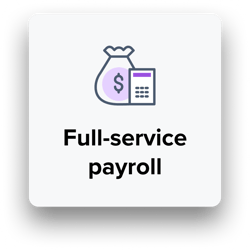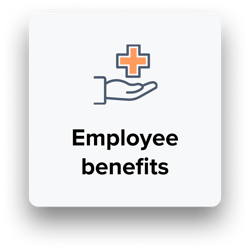The Essential Guide to Healthcare Performance Reviews
Consistent, high-quality healthcare performance reviews can have a dramatic impact on the success of your practice. The performance review process is an opportunity to recognize excellence, address opportunities for improvement, and set goals for the coming year.
Introduction
It’s true that this project requires a substantial investment of time, but most quickly discover that the return on that investment is well worth the effort. Better still, new tools and user-friendly performance management software can manage the technical aspects, leaving you free to focus on delivering relevant, actionable feedback to each of your team members.
In This Article
- What are Employee Performance Reviews?
- What are the Benefits of Healthcare Performance Reviews for Employees?
- Informal Feedback vs. Formal Performance Reviews
- The Value of Transparency
- What are the Benefits of Healthcare Performance Reviews for Practices?
- How Should Performance Reviews Be Completed and Delivered?
- General Performance Reviews
- 360-Degree Performance Reviews
- Measuring Performance Against Expectations
- What Happens During the Performance Review Process?
- Discuss Successes, Opportunities, and Goals
- How Can You Prepare for Delivering a Performance Review?
- What Happens After a Performance Review is Delivered?
What are Employee Performance Reviews?
Regular feedback given in the moment is critical to employee development, but this doesn’t take the place of formal employee performance reviews. Employee performance reviews are an opportunity to collect information that spans the entire performance period, then evaluate each team member’s overall performance against the expectations of the position.
Unlike ad-hoc recognition and impromptu constructive feedback, performance reviews look at how an employee performs during the entire performance period. They consider the big picture in terms of contributions and performance trends.
A comprehensive performance review may include the employees’ own feedback from self-evaluations, as well as assessments from other team members, patient feedback, performance against key metrics, and similar, arriving at an all-inclusive evaluation for the period in question.
Of course, performance reviews aren’t intended to be exclusively retrospective. This is also an important opportunity to plan for the coming year. You and your team members can use the performance review process to set goals and create action plans that support success in the weeks and months that follow.
What are the Benefits of Healthcare Performance Reviews for Employees?
In certain circles, the value of healthcare performance reviews for employees is under debate. Detractors argue that delivering annual performance feedback isn’t enough to ensure consistently strong performance. They say that frequent informal feedback is far more effective. However, it isn’t an either/or situation. Frequent, informal feedback is certainly valuable, but it doesn’t offer the same benefits as traditional healthcare performance reviews for employees.
Informal Feedback vs. Formal Performance Reviews
Informal feedback tends to be narrowly focused. It considers a single incident or element of performance, whether that performance is exceptionally good or falls short of expectations. The global perspective of a formal evaluation means larger issues and trends are identified. You can see patterns of behavior and consistency of performance over time, so that you can work with your employees on larger, longer-term goals.
Formal performance reviews encourage open communication between you and the members of your team, which builds stronger relationships. You learn more about their professional goals, and they better understand how they measure up to your expectations.
The Value of Transparency
These conversations ensure transparency - employees know exactly where they stand - and for your top performers, transparency increases engagement. This is especially true when your feedback is specific.
For example, instead of, “You are great with patients,” try “In the past six months, four patients have sent in written compliments. They said you helped to ease their anxiety when they came in for complex dental procedures.”
For employees that are struggling, transparency ensures no surprises when employment decisions around promotions and raises are made, or you determine that it is time to move forward with disciplinary action. Again, the feedback is most effective when it is specific. For example, instead of, “You are disorganized,” try “In the past six months, there have been sixteen situations in which you could not locate patient records, because they were not filed properly after a previous visit.”
What are the Benefits of Healthcare Performance Reviews for Practices?
The benefits of healthcare performance reviews go beyond creating a better experience for your team. There are also important benefits for your practice. The first and most important is that performance reviews often lead to improved performance among your employees. That means greater productivity and a better overall experience for your patients.
For example, the optician with the highest patient satisfaction score is now motivated to increase it still further. On the other hand, a pharmacist with an excessive number of dispensing errors will know that it’s time to identify the root cause of the errors and correct the problem, whether it is lack of knowledge, failure to follow safety procedures, or simple carelessness.
Formal employee reviews also benefit your practice by creating a record of each employee’s performance. The records demonstrate that you brought concerns to the attention of your team members, offered clear explanations of the expectations, and provided support in improving performance.
If you find yourself in the position of terminating a poor performer’s employment, these records can be critical in showing the decision was fair and consistent with your practice’s policies and procedures.
For example, you might document instances in which your vet technician failed to follow client interaction protocols, or incidents in which your appointment coordinator neglected to send confirmations to patients for physical therapy appointments. If the former employee later files a legal claim, you can clearly show the performance issues that led to the separation.
How Should Performance Reviews Be Completed and Delivered?
The first step in creating a performance review is to gather data. That includes feedback from a variety of sources - most importantly, employees themselves. Request that your team members complete self-evaluations, then add that to the performance information you have collected from reporting, from other leaders in your practice, and from your own observations.
Performance management software simplifies the process of collecting employee feedback, because the self-evaluation is captured right in the system. Once you have started the performance management process, the platform creates the self-evaluation documents, assigns them to your employees, tracks completion, and collects signatures.
The specific information you include in the review document varies based on types of performance reviews for the healthcare field. Two of the most popular options include general performance reviews and 360-degree reviews.
General Performance Reviews
General performance reviews involve on-going two-way communication throughout the year, with an evaluation of cumulative results at the end of the performance period. This tends to be most effective with today’s employees, as they have overwhelmingly indicated in study after study that frequent feedback is one of their highest priorities.
360-Degree Performance Reviews
You may also wish to consider a 360-degree performance review. This involves surveying a sample of all the people your team works with, including other physicians, peers, and direct reports. While particularly time-consuming, some practices prefer this method for the insight it gives on employee performance outside of what is observed directly.
Measuring Performance Against Expectations
Review all of the information and measure each employee against an objective list of expectations. This helps you to rank team members consistently based on performance throughout the measurement period - not just their most recent accomplishments and/or errors.
Use the narrative portion of the evaluation form to offer details on how the ranking was determined. Here, the words you choose make a critical difference in how the feedback is received by your employees.
Make objective statements that reference behaviors, not individuals’ personal characteristics. Support each statement with facts and examples. Be specific, so your employees understand exactly what they should continue to do, as well as which behaviors need to change in order to meet expectations.
When appropriate, make reference to the policies, procedures, and practices included in your Employee Handbook. You can add quotes from the Employee Handbook to the performance review to illustrate the fact that your feedback is consistent with the expectations communicated to all of the team members in your office.
Finally, during the performance discussion, encourage two-way communication. Give employees a chance to share their thoughts on their performance, along with any challenges they are experiencing. Collaborate on action plans for improving sub-par performance, and work together to set professional goals for the coming year.
What Happens During the Performance Review Process?
There is a reason annual performance reviews provoke anxiety among employees. Often, the document - and the conversation - consists of a list of performance issues and a lecture on personal flaws. Team members leave the discussion discouraged and disengaged, making it far more difficult for them to bring their performance up to standard.
You can change this perception by adjusting how the performance review process works in your practice. Focus on strengths-based coaching and empowering your team during annual performance evaluation meetings.
Discuss Successes, Opportunities, and Goals
Go over progress towards the goals you set together during the last review. Then, after a conversation about the employee’s successes and opportunities, create a new set of goals for the coming year. Examples include creating a production goal for your hygienist, a collection goal for your insurance coordinator, or a rebooking goal for your appointment coordinator.
Keep the objectives specific and timebound, with regular milestones, and set expectations that you will have follow up meetings to discuss achievement of milestones - or the issues preventing employees from reaching those milestones.
When your employees leave their performance review, they should feel confident that they know exactly what they can do to improve their rating over the next year. Better yet, they should know that you are prepared to support their success.
How Can You Prepare for Delivering a Performance Review?
You can increase the likelihood that performance review meetings will go smoothly when you thoroughly prepare for delivering each performance review before your employee is in front of you. Go over the performance information you have collected, and ensure you are ready to speak to the things they have done well in addition to areas they need to improve on.
Though you have included specific examples of performance in the document itself, plan to have a few more ready for discussion if needed. In some cases, employees have a difficult time understanding and accepting the feedback, and examples are an effective method of ensuring clear understanding.
Go into each performance meeting in a calm frame of mind, and remember that the discussion can be emotional for employees. Have a plan at the ready if the meeting becomes unproductive. For example, you can say, “I see you are upset, and I don’t think we are communicating effectively right now. I am going to leave the room so you can gather your thoughts, and we will connect again tomorrow to finish our conversation.”
What Happens After a Performance Review is Delivered?
Once you have delivered the performance review, leave time for discussion of the results. Answer questions, offer guidance and listen to employees’ perspectives on their rating and the comments. Though their feedback may not change the outcome, feeling heard can make a difference in how they engage with their work and the practice in the coming weeks and months.
Document your notes from the discussion and set the date for the next review. Add in dates for follow-up discussions and milestone goal achievement when you are working with poor performers. If you are meeting with your strong performers, discuss merit increases, promotions, and other rewards as applicable.
When possible, end the meeting on a positive note. Share words of confidence and encouragement, keeping in mind that the last thing you say is likely to resonate most.
Finally, keep in mind that you don’t have to take time away from your patients to handle a lot of review-related paperwork. Advanced software makes it possible to automate the technical aspects of this process, so your main responsibility is communicating results. The most effective performance management platforms create, send, and track self-evaluations and performance review forms. They facilitate electronic acknowledgments and signatures, then store completed documents in a manner that is easily accessible.
Quick note: This is not to be taken as legal or HR advice. Since employment laws change over time and can vary by location and industry, consult a lawyer or HR expert for specific guidance. Learn about HR for Health's HR services.
Partner with HR for Health
HR for doctors who don't do HR
Take a deep breath… Your HR’s done. It’s automated. Digital. Secure.
Sounds like heaven, right?
HR for Heatlh
At HR for Health, our mission is to revolutionize the HR management experience in the healthcare industry by combining data-driven insights with legal compliance. We strive to be the catalyst that propels our clients toward their goals, offering tailored strategies and software features that not only meet their immediate needs but also lay the foundation for long-term success within the realm of HR management.





